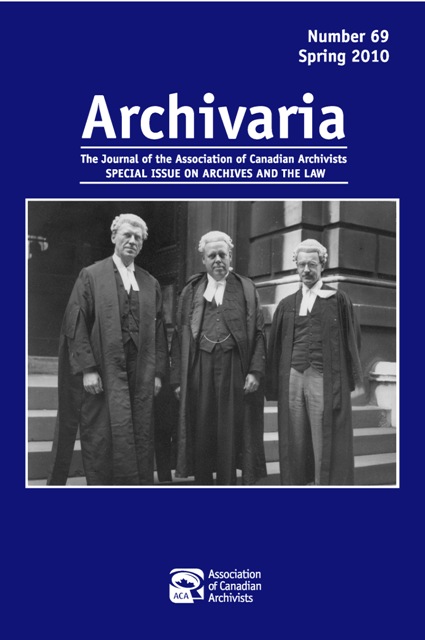“Ocular Proof”: Photographs as Legal Evidence
Abstract
This article traces the rules governing the admissibility of photographs into evidence in the courts of law of Canada, the United States, and Britain. The discussion is grounded in the nineteenth-century discourse of photographic objectivity, and examples of case law and legislation are cited to show the evolving response of the courts. The legal understanding of photographic evidence is examined from the late nineteenth century onward, and the twenty-first-century concerns surrounding the authenticity and admissibility of digital photographs are highlighted.
RÉSUMÉ
Ce texte retrace les règlements qui gouvernent l’admissibilité des photographies en tant que preuves dans les cours de justice au Canada, aux États-Unis et en Grande-Bretagne. L’auteur base son analyse sur le discours de l’objectivité photographique du XIXe siècle, et des exemples de jurisprudence et de législation sont utilisés pour montrer l’évolution de la réponse des tribunaux. Il examine la valeur légale de la preuve photographique à partir de la fin du XIXe siècle jusqu’à présent, en soulignant les préoccupations du XXIe siècle par rapport à l’authenticité et à l’admissibilité de la photographie numérique.
Authors of manuscripts accepted for publication retain copyright in their work. They are required to sign the Agreement on Authors' Rights and Responsibilities that permits Archivaria to publish and disseminate the work in print and electronically. In the same agreement, authors are required to confirm that "the material submitted for publication in Archivaria, both in its paper and electronic versions, including reproductions of other works (e.g. photographs, maps, etc.) does not infringe upon any existing copyright." Authors of manuscripts accepted for publication retain copyright in their work and are able to publish their articles in institutional repositories or elsewhere as long as the piece is posted after its original appearance on archivaria.ca. Any reproduction within one year following the date of this agreement requires the permission of the General Editor.





